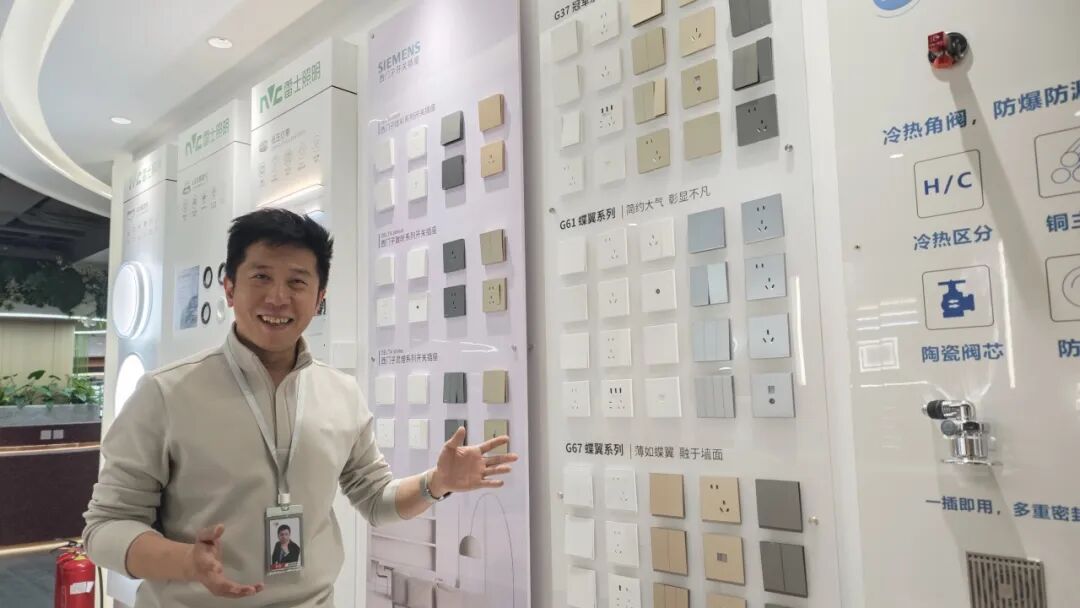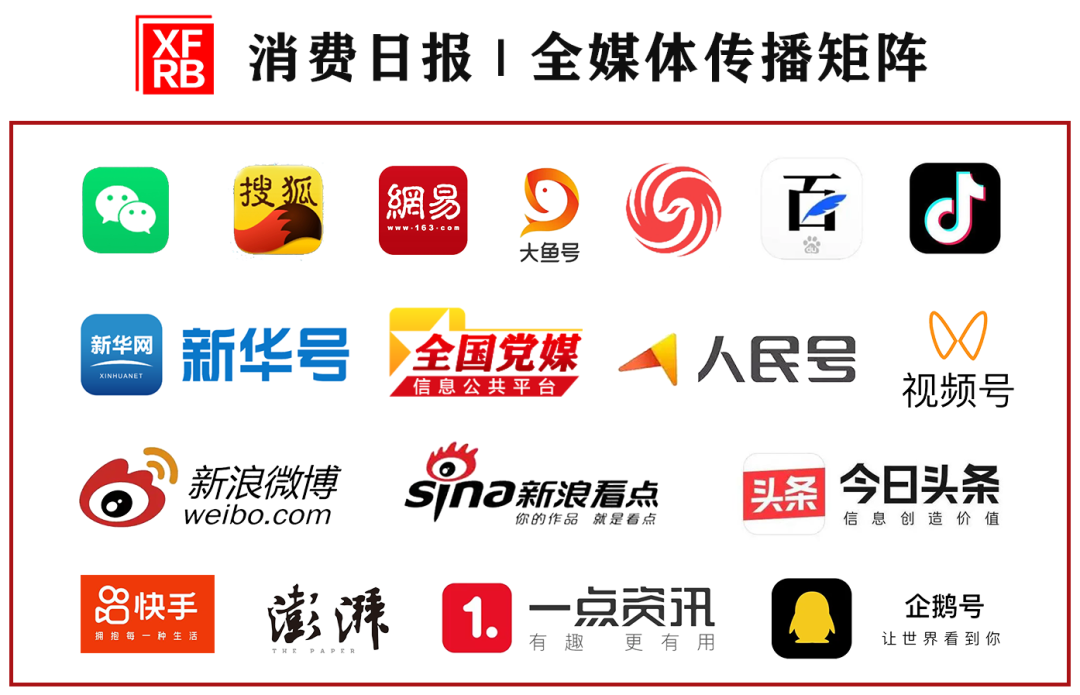
Wang Xin is introducing the product selection of “Qu Mei Smart Home”.
From the moment you return home, you can simply use your fingers to open the door, close the curtains, brighten the lights, turn on the air conditioning, prepare dinner, and clean the house. This is the lifestyle that the intelligent era brings, allowing people to “lie flat” when it comes to household chores. In this lifestyle, the boundaries between home appliances and home are gradually blurring.
On April 29, the well-established home furnishing company Qu Mei released its annual report for 2024, which shows that Qu Mei’s performance has stabilized and begun to recover, with strategic adjustments showing initial results. The annual report highlights the “Qu Mei Smart Home” service, which integrates home products with smart applications, receiving widespread attention. At Qu Mei’s flagship store in Beijing, Wang Xin, the general manager responsible for smart home business, represents a vivid reflection of the changes in the home consumption market—transitioning from selling computers and mobile phones at Lenovo to promoting Xiaomi’s smart home, and now diving into Qu Mei’s smart home services. Each of his career moves aligns with consumer demands: from pursuing the functionality of single products to a worry-free experience of one-stop home decoration, and now enjoying the convenience of a fully smart home. This change is driven not only by technological advancements but also by consumers’ pursuit of a quality lifestyle.

The ‘Hands-Free’ Lifestyle

Facial or palm print recognition can unlock the door; you can set the air conditioning temperature and light brightness via your phone; a robotic vacuum cleans quietly at night; various home appliances “communicate” with the homeowner… In today’s rapidly advancing technology, these once sci-fi scenarios have become a reality with the help of smart homes.
With the iterative upgrades of artificial intelligence technology, the evolution of smart homes goes far beyond this. On a short video platform, a blogger’s series titled “A Smart Home for the Post-95s” has garnered widespread attention. In the video, the smart home system not only prepares breakfast and arranges schedules for the owner but also provides investment and financial services. All of this is accomplished through voice control of various appliances, greatly liberating human hands.
Although such fully smart home packages are not yet widespread, the interconnectivity of individual smart appliances or two to three appliances and furniture has gradually entered thousands of households. Consumer Xiao An recently purchased an automatic curtain machine, which can be controlled via phone or voice. “After installation, I found it incredibly worry-free, it feels like I should have bought it sooner. Since I rent, I was hesitant about whether to buy it. Now that I have it, I think I should have bought it earlier to enjoy it sooner,” Xiao An expressed.
Many young people like Xiao An, who are eager to try smart appliances and embrace the new lifestyle brought by technology, are not alone. Under the dual influence of the “lazy economy” and “aesthetic economy,” more and more consumers are inclined to focus their home consumption on the intelligentization of the entire space, making smart homes a favored new consumption model. According to data from the National Bureau of Statistics, the retail sales of household appliances and audio-visual equipment in 2024 exceeded 1 trillion yuan, reaching 1,030.7 billion yuan, a 12.3% increase from the previous year, setting a historical high.

From Smart Appliances to Smart Homes
AIoT Market Size Exceeds 1 Trillion Yuan

Convenience and ease are among the core reasons for the popularity of smart homes. Many people pursue a self-indulgent and immersive home experience, and smart homes can provide them with a sense of relaxation. As Xiao An said: “I am a lazy person; I don’t want to do things that can be done by just talking, and I don’t want to get up to do things that can be done by hand. A long time ago, I bought a smart lamp that can be controlled via my phone on a friend’s recommendation, and now with this automatic curtain machine, I want to replace all my appliances with smart ones. After a long day, I just want to ‘lie flat’ and enjoy. Who can resist the temptation of an ‘electronic servant’?”
According to a report released by the China Business Industry Research Institute titled “Forecast and Strategic Investment Opportunities in the Chinese Smart Appliance Industry from 2025 to 2030,” the market size of China’s smart appliance industry is expected to reach approximately 756 billion yuan in 2024, a year-on-year increase of 3%. Analysts predict that the market size will reach 793.8 billion yuan by 2025. In such a vast consumer market, many related enterprises and practitioners are optimistic about this “track,” and Wang Xin is one of them.
Wang Xin’s career began as an ordinary clerk at Lenovo, gradually taking on roles such as store manager, regional manager, and sales director, eventually becoming the vice president of Lenovo’s new retail business at Laiku Technology, overseeing product lines including Lenovo desktop computers, laptops, and mobile phones. In 2015, due to Xiaomi’s recognition of his experience in smart products and sales services, he joined Xiaomi, responsible for the incubation of Xiaomi’s first prototype store, direct sales stores, and specialty stores, and participated in the establishment of the Xiaomi Home new retail business model.
When asked why he switched career paths to the smart home industry, Wang Xin stated: “On one hand, the smartization of appliances is an inevitable trend, and human-centered smart spaces are thriving, with a very large potential market in China. Many top tech companies, including Xiaomi, Huawei, Midea, Haier, and Gree, are paying great attention to this opportunity and investing significant R&D resources. On the other hand, there are many interaction issues and pain points between manufacturers and consumers online and offline, primarily due to the lack of integrated sales and service support, so the future is promising. Since I have been dealing with smart products for the past 20 years and have accumulated a lot of experience in sales, service, and new business incubation, I hope to integrate my experience into Qu Mei’s advantages in the furniture and home decoration field to create a one-stop “dream smart home” for consumers.” He believes that while various institutions’ research results show that this market is worth 800 billion yuan, they only account for whole-home smart products. In reality, all appliances are part of smart products. If we include cars, large appliances, and smart wearables, the artificial intelligence Internet of Things (AIoT) market far exceeds 1 trillion yuan. With the increasing demand for new housing and renovations, as well as the iterative upgrades of IoT, AI, and smart robotics technologies, the smart product market is set to experience rapid growth.

Smart Homes Can Even Play ‘Werewolf’ Games with You

In fact, as the penetration rate of smart appliances continues to rise, the industry is ushering in a new round of development opportunities. Many companies are accelerating their layout in the smart home field, driving product iteration and upgrades through technological innovation and scenario-based development, striving to meet users’ diverse needs for smart living with a more complete smart ecosystem or high-quality services. Qu Mei, where Wang Xin works, is among them.
Wang Xin introduced to reporters: “Qu Mei has been established for over thirty years, starting from furniture production and later expanding into the home decoration field. Now, Qu Mei is transforming from traditional furniture manufacturing to providing overall home decoration solutions, offering one-stop renovation services, aiming to reshape the consumer experience with a ‘from bare house to dream home’ one-stop service. If consumers want to create a fully smart home, we will customize a plan for them starting from the renovation.” He gave an example: “Some smart appliances need to be considered during the renovation phase. For instance, how to lay the basic wiring, how to deploy the smart network, and whether appliances need to be embedded. If you only think about these issues after the renovation is complete, it will be too late, and you will need to redo everything.”
At Qu Mei’s whole-home experience center, reporters experienced its “one-stop whole-home solution” service system, from space design and furniture customization to soft decoration matching. Staff demonstrated the operation of smart home systems from two major brands, Xiaomi and Huawei. “Currently, in the smart home field, Xiaomi and Huawei have an early advantage due to their early layout, and consumers generally choose smart appliances from these two brands,” Wang Xin said.
According to reports, Xiaomi connects numerous smart home devices through its vast ecosystem, forming a smart ecosystem. Users can easily control various smart devices at home, such as speakers, TVs, and floor fans, through Xiaomi’s smart voice assistant, “Xiao Ai.” The Xiaomi IoT platform has connected over 430 million devices. Huawei has launched a whole-home smart solution, evolving from single smart appliances to an integrated smart home across kitchens, balconies, living rooms, bedrooms, and bathrooms. For example, Huawei’s whole-home smart system can cooperate with young people who enjoy gaming and socializing at home to play Werewolf. When the game enters the phase where the judge says, “Everyone close your eyes,” the living room lights will dim. Additionally, Huawei has solved the interconnectivity issues between different brands of smart devices. Besides Xiaomi and Huawei, brands like Haier and Midea also have their own smart appliance systems.
Wang Xin believes that looking at today’s smart home market, Xiaomi and Huawei are the “top players,” while some traditional brands that started with home appliances, although they have also laid out smart appliances early, still lag behind in terms of the number of smart categories and user base. Xiaomi’s smart home system has formed a self-contained loop, while Huawei’s system is open and collaborates with multiple strategic partners for R&D, with both models having their advantages, likely to dominate the market in the future.

Housekeeping Robots Expected to Take Over Household Chores

The imagination of home is, in fact, people’s imagination of “home.” With the rapid development of models like DeepSeek and robotics, people’s imagination of smart homes has been further expanded. Many smart appliances have already integrated language models, and looking ahead, the development prospects of the smart home industry are promising.
On one hand, housekeeping robots will fully take over household chores, from sweeping and mopping to laundry and cooking, even taking care of the elderly and children. Housekeeping robots will become an indispensable part of the family. Shi Tou Technology’s president, Quan Gang, has stated that future robotic vacuums could evolve into household service robots, capable of folding clothes, chopping vegetables, and performing more diverse functions.
On the other hand, one-stop home decoration will become an important development direction for the future home industry. Consumers will no longer have to worry about various trivial matters during the renovation process. From design and material selection to construction and acceptance, one-stop home decoration services will provide consumers with comprehensive solutions, truly achieving time-saving, labor-saving, and worry-free.
So how many years will it take to truly achieve a lifestyle where you only need to talk to solve all household chores? In response to reporters’ questions, Wang Xin stated: “It took more than a decade for computers to become popular, while smartphones took only a few years. However, given today’s industrial production capabilities and the speed of internet promotion, the time difference between the first consumer to own a housekeeping robot and the last will be very short. I predict that within the next two to three years, home appliances will achieve IoT integration, followed by the AI intelligent control phase, and then the popularization of housekeeping robots. The process of popularization may be faster due to market demand and technological advancements, and costs will also decrease. In about ten years, every family will be able to live in their ‘dream smart home,’ and the application of artificial intelligence IoT in China is likely to surpass that of other advanced countries.”
Perhaps in the near future, the scenes showcased by that short video blogger in “A Smart Home for the Post-95s” will become commonplace for every consumer.
Written by | Photographer: Zhao Xi □ Tang Rui
